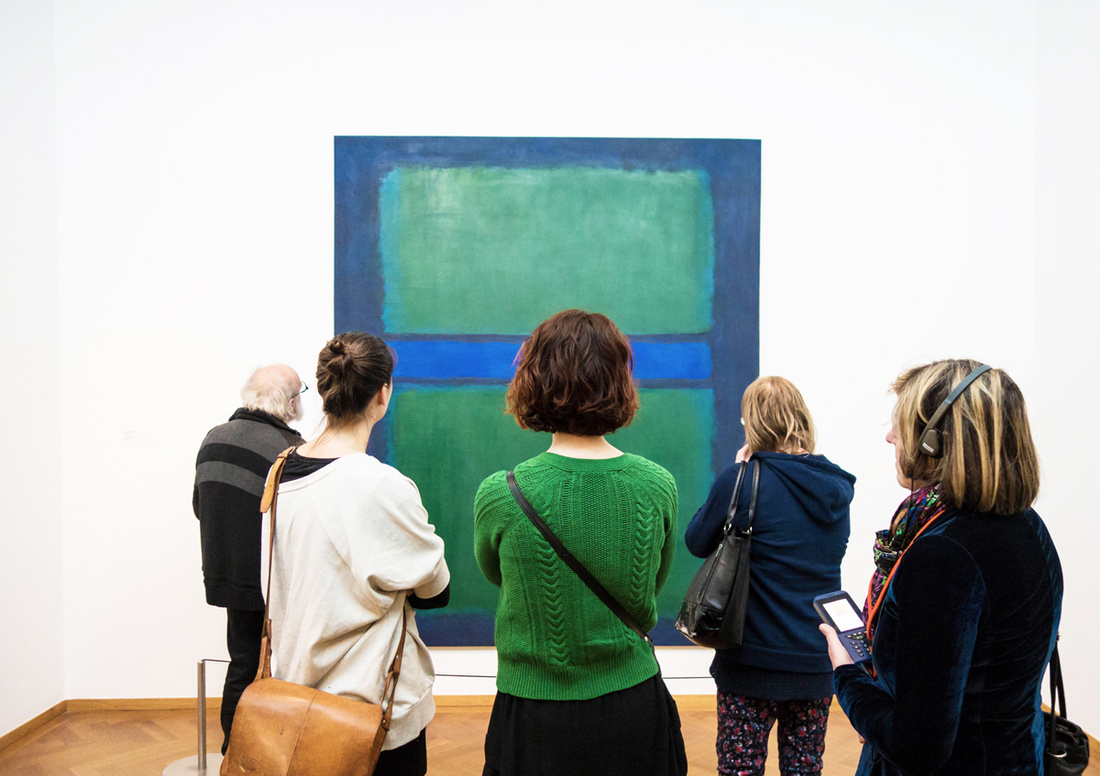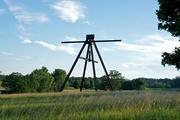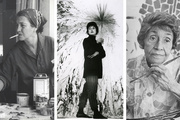What Makes an Abstract Expressionist Painting Good?

Photo by Bastian, via Flickr.
One of my responsibilities here at Artsy Editorial is to ponder the art-historical questions that are perhaps best answered either with a raised eyebrow or by saying, “because duh, that’s why.” Today’s entry in this series: What makes a work of Abstract Expressionist art good?
As in previous iterations (see: Why buy a painting when you can make your own?), the simplest of queries sometimes raises interesting and compelling ideas if one stares at it hard enough. In exploring subjective questions of quality and their relationship to the art-historical canon, one finds that a “good” AbEx work is one that is determined to be so by both the viewer and the critics and experts, as well as being the result of societal biases (more on that last part later).
Abstract Expressionism is perhaps one of the most recognized historical genres. Blame it on the impact of these typically large-scale, vibrant works, their permanent presence in the Art History 101 curriculum, or the skeptical cries of “My kid could do that!” The term originally rose to prominence in the mid-20th century to describe a group of artists working in New York following World War II. You know their names: Jackson Pollock, Mark Rothko, Franz Kline—the list goes on.
The painters were championed or chided (often both) by critics of the day such as Clement Greenberg, who had both unparalleled influence and art-historical clout, unlike critics of our current age. They had their own standards of AbEx quality—how flat a painting was, for example.
Though broadly interested in using abstraction as a way to convey individual emotions, the painters who worked in an AbEx mode actually spanned a wide range of techniques, styles, and intentions. In short, like all art-historical groupings, AbEx is both broad and somewhat limiting in how it brings together a diverse range of artists. Each artist had a signature style, from Pollock’s spontaneous, chaotic drip technique to Rothko’s atmospheric squares.
An understanding of this historical background and criticism are important, but really appreciating Abstract Expressionism is “not about reading a textbook,” said Gwen Chanzit, curator of modern art at the Denver Art Museum, who curated this year’s “Women of Abstract Expressionism” exhibition. Indeed, the quality of an Abstract Expressionist work can be gauged mainly by how it makes you feel.
This is, of course, true of much art. But AbEx works in particular—with their intense color, large scale, and, in Pollock’s case at least, frenzied application of paint—can elicit an emotional response from viewers that requires a physical, often prolonged, encounter with them. And the more you encounter these works, the more you’re able to judge them; this is true even for the pros. “You cannot be a curator in a vacuum. You have to be out into the world to see a lot of things. Then hopefully you recognize quality,” said Chanzit.
It’s key to recognize, though, that the canon of AbEx masters was also the product of societal biases, and that our subjective opinions are not always free from the influence of broader cultural realities. Most of the major AbEx figures are white men, despite there having been both artists of color and women working in the genre (see: Norman Lewis or Lee Krasner).
This is something Chanzit quickly learned as she curated her exhibition. “The truth is I did not set out to do a women’s show; I really set out to see who’d been left out of the canon of Abstract Expressionism,” she said. “When I began to see which people had been left out, I realized there was a whole gender missing.” She brought together over 50 works by 12 women painters associated with AbEx, including Krasner, Judith Godwin, Grace Hartigan, and Ethel Schwabacher.
But when one sees two abstract works side-by-side, regardless of the artist’s identity, how to determine which is better? How does one judge the quality of two similar works by Rothko, for instance? Part of the answer is time. “If you’re looking at a painting by Rothko, you need to give it time, so that you can almost lose yourself within that canvas,” said Chanzit. “You can’t walk by a Rothko and get very much out of it. But if you spend the time to immerse yourself within it, that’s when there’s a reward.”
There is, of course, also the historical significance of Rothko’s work. While his style may seem predictable now, at the time no one else was painting such rich, immersive fields of pure color that engulf one’s eyes.
Looking beyond the individual experience, I wondered how the market determines the quality of an AbEx painting—that is, how dollar and cent values are ascribed to paintings. Michael Macaulay, Senior Vice President and Head of Evening Sales Contemporary Art at Sotheby’s, is quick to note that the wide breadth of AbEx art means the label can lose some of its usefulness.
The result is that market evaluation is “artist-specific and then focused painting-by-painting,” he said. “We are of course bearing in mind its historical significance. We are evaluating a number of more quantifiable factors, like scale, palette, mode of execution, condition. And then there are a lot of softer factors to consider, like aesthetic appeal, which of course is very subjective.” Collectors have different tastes independent of the art-historical canon, too, perhaps valuing a Rothko over a Pollock, for whatever reason. And just as the general canon values women and AbEx artists of color less than their male counterparts, so too does the market.
Taking that earlier example of evaluating two Rothko works, Macaulay advises looking at the date, given that what year the artist created the work is “very critical” and can be connected to major moments in the artist’s career and art history generally. For the Rothko market, a golden year is 1954, “the year of his first solo exhibition at a major museum in the United States, held at the Art Institute of Chicago,” said Macaulay, adding that 1950 is another important year in the artist’s career, when he found his stride working in the “classic, stacked rectangular color form” he is known for.
No wonder, then, that the two most expensive Rothkos sold at Sotheby’s are No 1 (Royal Red and Blue) from 1954 and White Center (Yellow, Pink and Lavender on Rose), painted in 1950. Of course, both these works are stunning and rare. “I think at a certain level these works are all exceptional,” said Macaulay. “We can’t become too lazy in describing these masterworks as being a dime a dozen.” And saying one is “better” simply because it fetched more at auction is a limited metric, to say the least.
Macaulay also emphasizes how crucial it is to see these pieces in person. “You can’t replicate the experience of standing in front of a Mark Rothko, you can’t replicate the experience of standing in front of a Jackson Pollock,” he said. “The quality, the execution, the kind of intensity of the layers of paint, the quality of the drip is relatively discernible when you see these things first-hand. And it’s very important that you focus more on quality than anything else.”
And he cautions against leaning on the AbEx label as a crutch. Slapping it on an artist’s work obscures variations within their practice—see De Kooning’s flirtations with figures in works, for example (“there are so many chapters in his life,” said Macaulay). And at worst, such categorization asks us to evaluate an artist within a set of historical criteria rather than simply experiencing it. So when asking what makes a work of Abstract Expressionism good, read the wall label and the date, know a thing or two about the history, and check your own biases. But don’t forget to look.
—Isaac Kaplan





No comments:
Post a Comment